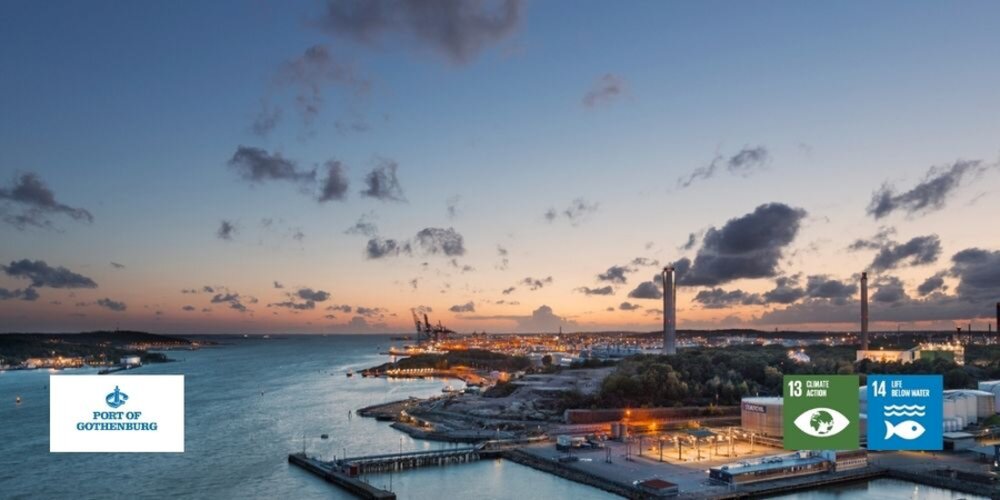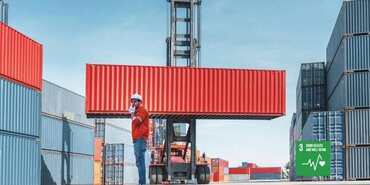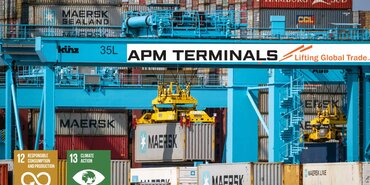Just-in-time port calls: a safer and greener solution at the Port of Gothenburg

Just-in-time port call systems can lead to a significant improvement in a port’s operational efficiency by avoiding ships having to wait to berth. They can also have a positive environmental impact – and at no extra cost to the port authority. Gothenburg Port Authority in Sweden has realised both benefits through the Digital Port Call system.
Just-in-time scheduling
Quite often ships need to wait before entering a port due to various reasons, such as port restrictions, bad weather or the target berth being occupied by another ship. Waiting ships may need to sail to a designated anchorage area or move slowly near the port for extended periods. In many cases, if the actual time when a ship could arrive at a berth was known in advance, the ship could travel more directly and at a slower, more economical speed, thus saving fuel and money while reducing greenhouse gas emissions.
Adopting such a just-in-time scheduling process requires a change in practices and contractual agreements from the first-come first-served process traditionally applied in the maritime industry. Just-in-time port call systems are seen by the International Maritime Organization as having a significant role to play in port optimisation.
Port of Gothenburg
Situated at the mouth of the Göta älv river, the Port of Gothenburg is a European hub for shortsea shipping. It is also at the intersection of the main roads between the European capital cities of Oslo, Stockholm and Copenhagen. Handling 38.4 Mt of goods in 2024, it is the largest port in Scandinavia. The Gothenburg Port Authority is a municipal company which owns the port area, leases space to various transport and logistics businesses and manages the site. The actual handling of cargo, including loading and unloading of ships, is performed by the Authority’s designated partners, over which it exercises strategic insight and control. The Authority maintains and manages all infrastructure, land and properties based on the needs of customers and society. It is developing the port with a long-term perspective, building new facilities and working constantly on various initiatives to enhance the services provided.
Digital Port Call system
Each year, Port of Gothenburg handles about 6,000 port calls, and every extra hour that unloading and loading takes makes a difference to the competitiveness of both the port and its customers. A ship’s entire port call at Gothenburg, from open sea to unloading at the quay and out to sea again, involves around 20 different contact points. This previously required a lot of time-consuming communication and resulted in a high risk of misunderstandings and delays. Adoption of the Digital Port Call system in May 2024 has combined all those contacts into a single service. The system makes relevant information immediately available to the parties involved, making it easier to make decisions, increasing predictability and security.
Up to 36 hours before departure, everyone from the captain and pilot to the stevedores and crane operators knows where and when the ship will need something. Thanks to the virtual arrival communication in the platform, the captain can adjust the ship’s speed to avoid anchoring while waiting for a berth, which means lower fuel consumption and greener transport. Once on berth, everything is synchronised and prepared for the best possible service because all parties already know when their tasks are to be performed. The cargo is handled more efficiently and moves on to the customer more quickly, and the ship’s time on berth is reduced. According to the Authority’s 2024 Sustainability Report, when Digital Port Call is in full use, more efficient calls to Gothenburg will reduce annual carbon dioxide emissions by 6,000 tonnes.
According to the Authority’s 2024 Sustainability Report, when Digital Port Call is in full use, more efficient calls to Gothenburg will reduce annual carbon dioxide emissions by 6,000 tonnes.
Conclusion
Just-in-time scheduling enhances efficiency by enabling ships to adjust speed based on berth availability. This also reduces fuel consumption, costs and greenhouse gas emissions. Gothenburg’s digitised system integrates all port call communications into a single platform, allowing stakeholders to access real-time information and plan operations more effectively, minimising delays, enhancing safety and delivering sustainability
- Author
- Oscar Egerström
- Date
- 06/11/2025




